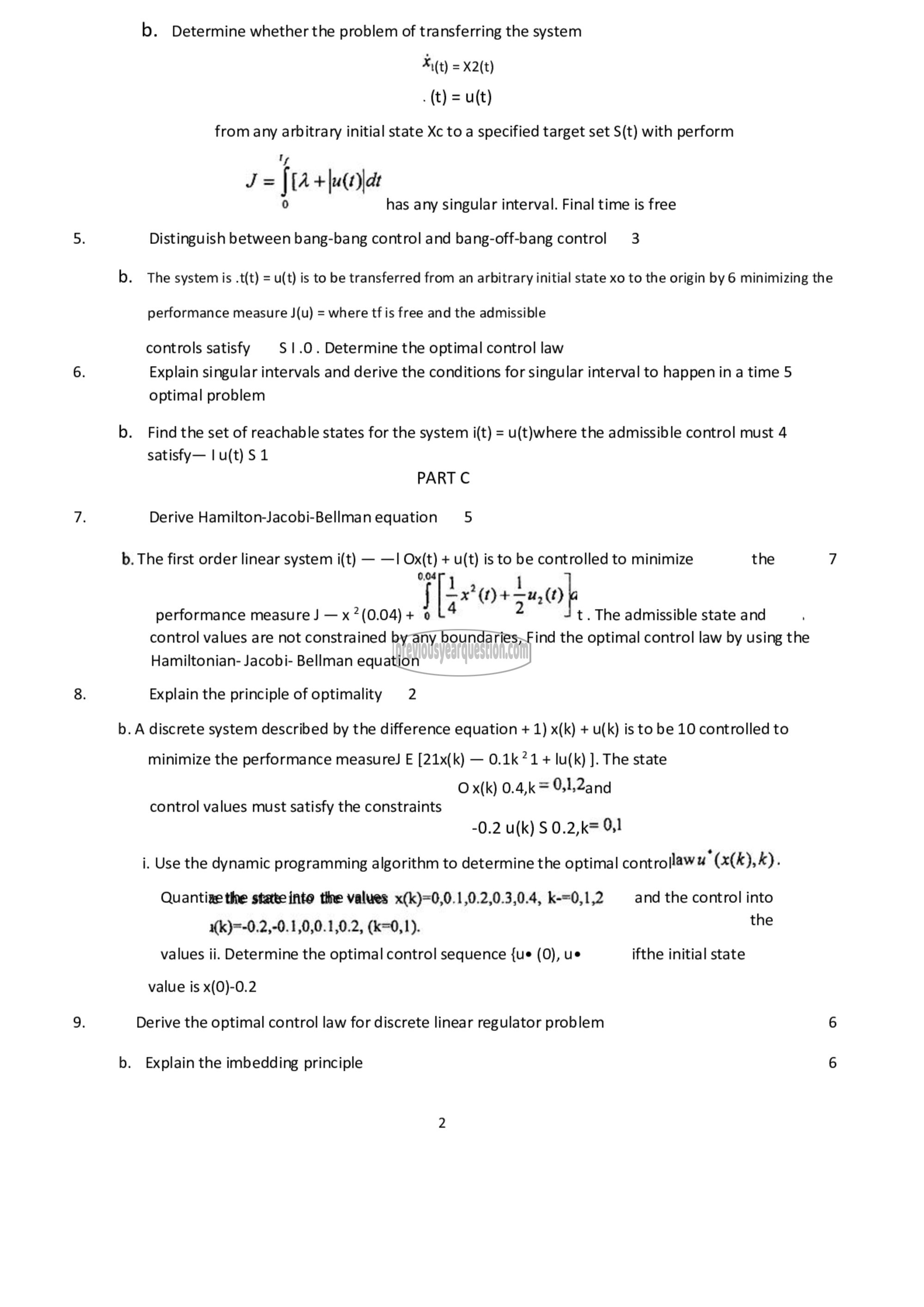APJ ABDUL KALAM TECHNOLOGICAL UNIVERSITY Previous Years Question Paper & Answer
Semester : SEMESTER 2
Subject : Optimal Control Theory
Year : 2018
Term : MAY
Branch : CONTROL SYSTEMS
Scheme : 2015 Full Time
Course Code : 01 EE 6102
Page:2
b. Determine whether the problem of transferring the system
X(t) = x2/t)
. (t) = u(t)
from any arbitrary initial state علا to a specified target set S(t) with perform
ay
J = [4 +|)
0 has any singular interval. Final time is free
Distinguish between bang-bang control and bang-off-bang control 3
b. The system is .t(t) = u(t) is to be transferred from an arbitrary initial state xo to the origin by 6 minimizing the
performance measure J(u) = where tf is free and the admissible
controls satisfy 51.0. Determine the optimal control law
Explain singular intervals and derive the conditions for singular interval to happen ina time 5
optimal problem
b. Find the set of reachable states for the system i(t) = u(t)where the admissible control must 4
satisfy— | u(t) 5 1
PART €
Derive Hamilton-Jacobi-Bellman equation 5
b. The first order linear system i(t) — --| Ox(t) + u(t) is to be controlled to minimize the 7
0.04
| 1 1
1 റ
performance measure J — x (0.04) 0 t. The admissible state and
control values are not constrained by any boundaries, Find the optimal control law by using the
Hamiltonian- Jacobi- Bellman equation
Explain the principle of optimality 2
b. A discrete system described by the difference equation + 1) x(k) + u(k) is to be 10 controlled to
minimize the performance measureJ ع [21x(k) — 0.1121 + lu(k) ]. The state
O x(k) 0.4,k = 951,2and
control values must satisfy the constraints
-0.2 u(k) ऽ 0.2,k= 0,1
i. Use the dynamic programming algorithm to determine the optimal controllawu (x(k), 4) .
Quantize the statte into tine values x(k)=0,0.1,0.2,0.3,0.4, k-=0,1,2 and the control into
x(k)=-0.2,-0.1,0,0.1,0.2, (k=0,1). the
values ii. Determine the optimal control sequence {ue (0), ue ifthe initial state
value is «(0)-0.2
Derive the optimal control law for discrete linear regulator problem
b. Explain the imbedding principle
